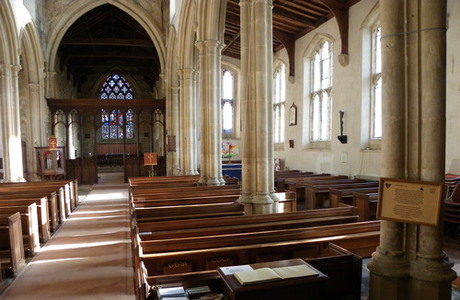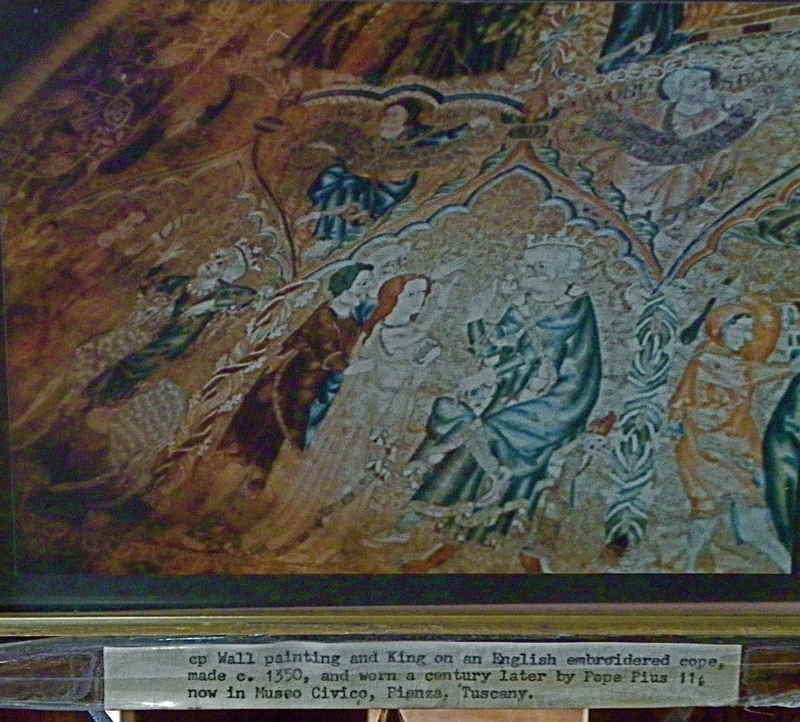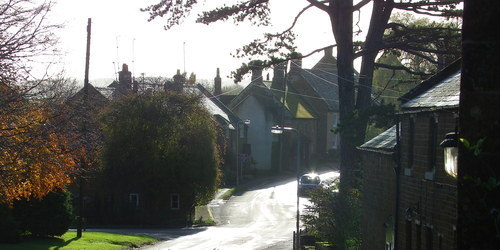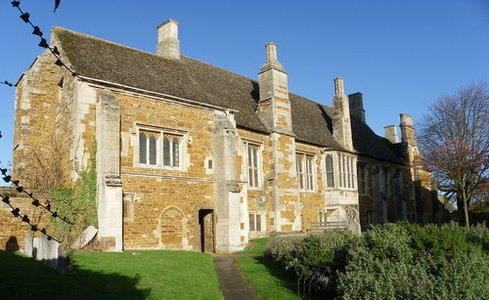| St Andrew's Lyddington | |
| | |
The chancel of St Andrew's Church, Lyddington, was probably enlarged by Bishop Burghersh in the early 14th century, with acoustic pots placed in recesses near the tops of the walls to amplify the sound.
|  |
| Bishop Alnwick claimed to have rebuilt the nave a century later. | |
| Some of the frescoes from the preceding centuries of Catholic England, obliterated at The Reformation in the 1530s and 40s, by Cromwell and Cranmer during the reigns of Henry VIII & Edward VI, have recently been revealed, including one thought to be of Edward the Confessor (1042 - 1066). |  |
| Perhaps the greatest day in the life of St Andrew's church in Lyddington may have been 30th November 1554 when Mary Tudor proclaimed the return of England to Rome and ordered that that day (St Andrew's day) be celebrated henceforth as the greatest of all national holidays. The burnings (220 men and 60 women) recorded in Foxe's Book of Martyrs began in 1555. | |
| The village of Lyddington is noted for its many Tudor and Stuart houses, and cottages, built of the local honey-coloured ironstone, most of which are listed. |  |
| The Bede House, formerly part of a medieval palace of the Bishops of Lincoln in the pre-Reformation days of obedience to Rome, is now under the guardianship of English Heritage and is open from Easter until the end of October. |  |
| Walks radiate from the village to many places of interest, such as the medieval fish-ponds, Eyebrook Reservoir where the ‘dam busters’ trained, and the village of Stoke Dry, with its connection to the gunpowder plot. | |
| In the 13th century a deer park was put in place by the Bishops of Lincoln on the high ground at the west of the parish (now alongside the A6003 Corby-Uppingham road). The deer park provided hunting sport for the Bishops' visitors and fresh meat for the table and can still be recognized by the non-rectangular curved field edges in the field bordered on two sides by the A6003 and the Stoke Road at the A6003 crossroads. | |
| | |
| | |




